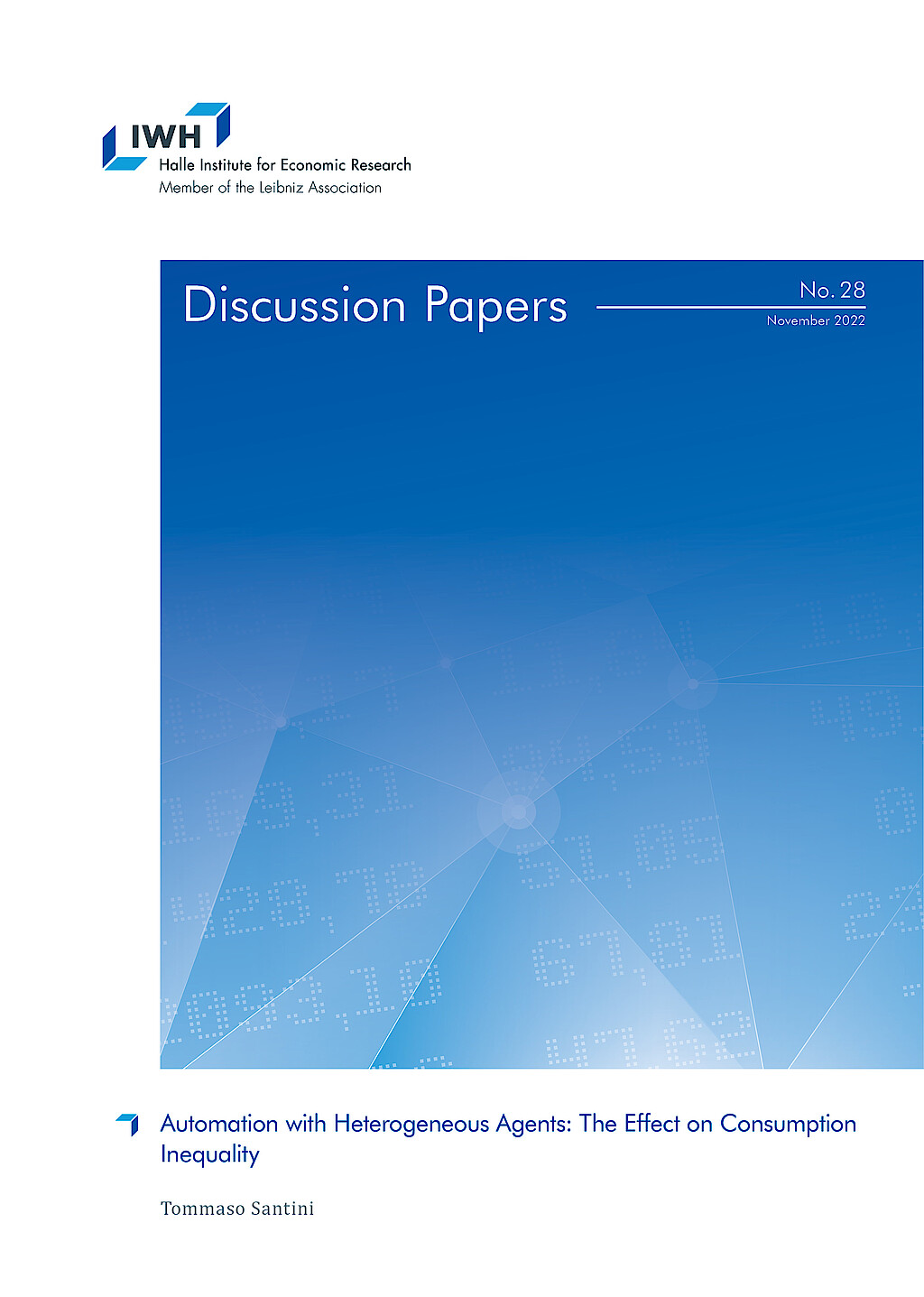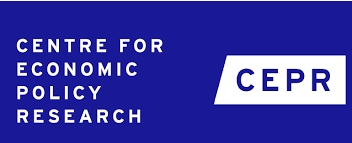Ökonomische Unterschiede zwischen Ost- und Westdeutschland
Die Gruppe untersucht mit innovativen Methoden, warum die Wirtschaft in Ostdeutschland bis heute hinter der westdeutschen zurückbleibt und welche Rolle die Treuhandanstalt dabei spielt.
In ihrem Hauptprojekt untersucht die Gruppe den Prozess der Privatisierung der DDR-Wirtschaft durch die Treuhandanstalt. Inwiefern spielte die Qualifizierung der ausgewählten Managerinnen und Manager und deren Netzwerk zu anderen Entscheidern eine Rolle? In Form eines Benchmark-Modells soll auf Basis von Mikrodaten (Firmen, Manager, Patente, Ideen) herausgefunden werden, wie die ostdeutschen Betriebe heute daständen, wenn sie ausschließlich von talentierten Unternehmerpersönlichkeiten übernommen worden wären. Das zweite Projekt analysiert, warum besonders innovative Firmen seltener in Ost- als in Westdeutschland entstehen und welche Rolle Migrantinnen und Migranten für das Wirtschaftswachstum und die Wissensproduktion in Deutschland spielen. Das dritte Projekt verwendet CompNet-Daten, um nach Gründen für die schwindende Produktivitätsdynamik in Europa zu suchen.
Forschungscluster
Wirtschaftliche Dynamik und StabilitätIhr Kontakt

- Abteilung Strukturwandel und Produktivität
Referierte Publikationen

History, Microdata, and Endogenous Growth
in: Annual Review of Economics, 2019
Abstract
The study of economic growth is concerned with long-run changes, and therefore, historical data should be especially influential in informing the development of new theories. In this review, we draw on the recent literature to highlight areas in which study of history has played a particularly prominent role in improving our understanding of growth dynamics. Research at the intersection of historical data, theory, and empirics has the potential to reframe how we think about economic growth in much the same way that historical perspectives helped to shape the first generation of endogenous growth theories.

Innovation and Top Income Inequality
in: Review of Economic Studies, Nr. 1, 2019
Abstract
In this article, we use cross-state panel and cross-U.S. commuting-zone data to look at the relationship between innovation, top income inequality and social mobility. We find positive correlations between measures of innovation and top income inequality. We also show that the correlations between innovation and broad measures of inequality are not significant. Next, using instrumental variable analysis, we argue that these correlations at least partly reflect a causality from innovation to top income shares. Finally, we show that innovation, particularly by new entrants, is positively associated with social mobility, but less so in local areas with more intense lobbying activities.

Innovation, Reallocation, and Growth
in: American Economic Review, Nr. 11, 2018
Abstract
We build a model of firm-level innovation, productivity growth, and reallocation featuring endogenous entry and exit. A new and central economic force is the selection between high- and low-type firms, which differ in terms of their innovative capacity. We estimate the parameters of the model using US Census microdata on firm-level output, R&D, and patenting. The model provides a good fit to the dynamics of firm entry and exit, output, and R&D. Taxing the continued operation of incumbents can lead to sizable gains (of the order of 1.4 percent improvement in welfare) by encouraging exit of less productive firms and freeing up skilled labor to be used for R&D by high-type incumbents. Subsidies to the R&D of incumbents do not achieve this objective because they encourage the survival and expansion of low-type firms.

Growth through Heterogeneous Innovations
in: Journal of Political Economy, Nr. 4, 2018
Abstract
We build a tractable growth model in which multiproduct incumbents invest in internal innovations to improve their existing products, while new entrants and incumbents invest in external innovations to acquire new product lines. External and internal innovations generate heterogeneous innovation qualities, and firm size affects innovation incentives. We analyze how different types of innovation contribute to economic growth and the role of the firm size distribution. Our model aligns with many observed empirical regularities, and we quantify our framework with Census Bureau and patent data for US firms. Internal innovation scales moderately faster with firm size than external innovation.

On the Returns to Invention within Firms: Evidence from Finland
in: American Economic Association Papers and Proceedings, 2018
Abstract
In this paper we merge individual income data, firm-level data, patenting data, and IQ data in Finland over the period 1988–2012 to analyze the returns to invention for inventors and their coworkers or stakeholders within the same firm. We find that: (i) inventors collect only 8 percent of the total private return from invention; (ii) entrepreneurs get over 44 percent of the total gains; (iii) bluecollar workers get about 26 percent of the gains and the rest goes to white-collar workers. Moreover, entrepreneurs start with significant negative returns prior to the patent application, but their returns subsequently become highly positive.
Arbeitspapiere

Climate Change Concerns and Information Spillovers from Socially-connected Friends
in: IWH Discussion Papers, Nr. 2, 2023
Abstract
This paper studies the role of social connections in shaping individuals’ concerns about climate change. I combine granular climate data, region-level social network data and survey responses for 24 European countries in order to document large information spillovers. Individuals become more concerned about climate change when their geographically distant friends living in sociallyconnected regions have experienced large increases in temperatures since 1990. Exploring the heterogeneity of the spillover effects, I uncover that the learning via social networks plays a central role. Further, results illustrate the important role of social values and economic preferences for understanding how information spillovers affect individual concerns.

Automation with Heterogeneous Agents: The Effect on Consumption Inequality
in: IWH Discussion Papers, Nr. 28, 2022
Abstract
In this paper, I study technological change as a candidate for the observed increase in consumption inequality in the United States. I build an incomplete market model with educational choice combined with a task-based model on the production side. I consider two channels through which technology affects inequality: the skill that an agent can supply in the labor market and the level of capital she owns. In a quantitative analysis, I show that (i) the model replicates the increase in consumption inequality between 1981 and 2008 in the US (ii) educational choice and the return to wealth are quantitatively important in explaining the increase in consumption inequality.

The Value of Firm Networks: A Natural Experiment on Board Connections
in: SAFE Working Papers, Nr. 269, 2022
Abstract
We present causal evidence on the effect of boardroom networks on firm value and compensation policies. We exploit a ban on interlocking directorates of Italian financial and insurance companies as exogenous variation and show that firms that lose centrality in the network experience negative abnormal returns around the announcement date. The key driver of our results is the role of boardroom connections in reducing asymmetric information. The complementarities with the input-output and cross-ownership networks are consistent with this channel. Using hand-collected data, we also show that network centrality has a positive effect on directors’ compensation, providing evidence of rent sharing.

Automation, Globalization and Vanishing Jobs: A Labor Market Sorting View
in: IZA Discussion Paper, Nr. 13267, 2020
Abstract
We show, theoretically and empirically, that the effects of technological change associated with automation and offshoring on the labor market can substantially deviate from standard neoclassical conclusions when search frictions hinder efficient assortative matching between firms with heterogeneous tasks and workers with heterogeneous skills. Our key hypothesis is that better matches enjoy a comparative advantage in exploiting automation and a comparative disadvantage in exploiting offshoring. It implies that automation (offshoring) may reduce (raise) employment by lengthening (shortening) unemployment duration due to higher (lower) match selectivity. We find empirical support for this implication in a dataset covering 92 occupations and 16 sectors in 13 European countries from 1995 to 2010.

The Value of Firm Networks: A Natural Experiment on Board Connections
in: CEPR Discussion Papers, Nr. 14591, 2020
Abstract
This paper presents causal evidence of the effects of boardroom networks on firm value and compensation policies. We exploit exogenous variation in network centrality arising from a ban on interlocking directorates of Italian financial and insurance companies. We leverage this shock to show that firms whose centrality in the network rises after the reform experience positive abnormal returns around the announcement date and are better hedged against shocks. Information dissemination plays a central role: results are driven by firms that have higher idiosyncratic volatility, low analyst coverage, and more uncertainty surrounding their earnings forecasts. Firms benefit more from boardroom centrality when they are more central in the input-output network, hence more susceptible to upstream shocks, when they are less central in the cross-ownership network, or when they have low profitability or low growth opportunities. Network centrality also results in higher directors' compensation, due to rent sharing and improved executives' outside option, and more similar compensation policies between connected firms.










